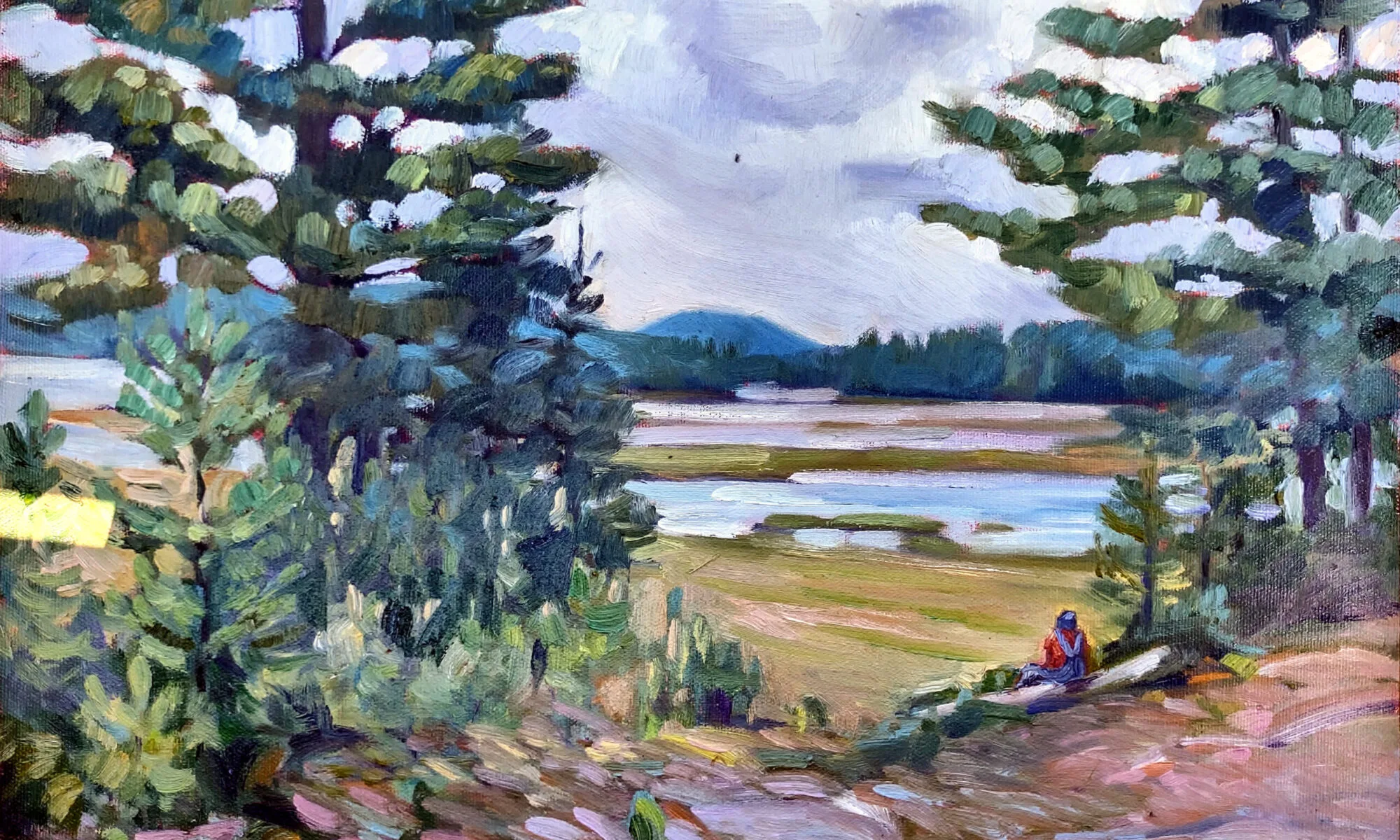Please stop cluttering up the forest with silly signs.
| Bracken Fern, 9×12, oil on canvasboard, $869 in gold plein air frame. |
I like the written word almost as much as I like paint. I spend a lot of my time reading it, and sometimes I write it.
I also like the lonely paths through verdant forest, the high ridges from which I can see the sea and sky. During the week, my hikes are limited to places that I can reach in a few minutes from my home. That means Land Trust properties. I’m grateful that these lands are being maintained as open space by citizen-consortiums, especially with the proliferation of summer homes along the coast.
 |
| Spring on Beech Hill, 8×10, oil on canvasboard, $522 unframed. |
The occasional blue diamond to keep us on the straight-and-narrow is a good thing. However, most of the signage along the trails near my house has nothing to do with safety. Most of these intrusive signs are ‘informative’, telling us the life-cycle of the blueberry or expounding on the need to regenerate meadows. There are the inevitable and necessary posts about rules, of course.
But strung along a path close to my house are a series of signs with revolving displays of—of all things—poetry. I close my eyes tightly as I walk past, but I inevitably catch some of the words, which in turn intrude into my private thoughts. I avoid this path when I can, but there are times when it’s inevitable.
Still, they’re only a few signs—perhaps a half dozen or dozen in all—so why do they get my back up? And they do regardless of the content, which can range from the pixieish to the political.
 |
| Glaciar Cagliaro from Rio Electrico, 12X16, oil on birch, $1159 unframed. |
We are drowning in a surfeit of words. They chase us from the time we open our eyes until we rest at night—or in my case, since I read at night, even into my dreams. Our homes are full of written words, with the signage wall-decor trend showing no sign of abating. (One tiny landscape photograph will have far greater impact than that big ‘live, love, laugh’ sign at TJ Maxx, but the shelves are still full of them.)
Nature should be a place where those things are left behind. As the poet Wendell Berry wrote:
To come in among these trees you must leave behind
the six days’ world, all of it, all of its plans and hopes.
You must come without weapon or tool, alone,
expecting nothing, remembering nothing,
into the ease of sight, the brotherhood [and sisterhood!] of eye and leaf. (Wendell Berry)
We go to the woods to sort out the jumble of our thoughts, to refresh ourselves for living, to chat quietly with a friend, to watch birds and other wildlife, to watch our dogs look at the world. None of that is enhanced by having someone else’s thoughts written over ours.
| Beaver Dam on Quebec Brook, 12X16, oil on canvasboard, $1449 in plein air frame. |
Henry David Thoreau was a poet, essayist, philosopher, and leading Transcendentalist(a philosophy that could use revisiting these days). He could be considered the father of modern conservation. Thoreau’s life revolved around words, but he turned to nature to concentrate his mind. It was his exemplar and reference point. As he famously wrote:
I went to the woods because I wished to live deliberately, to front only the essential facts of life, and see if I could not learn what it had to teach, and not, when I came to die, discover that I had not lived.
Every time I see those blasted signs along my walk, I sigh and wonder, “what would Thoreau think?”
